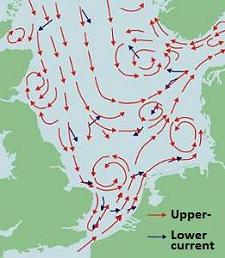
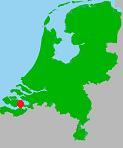
Relation with Lake (class): No. Is a cemetery without lake link.
Total nr. of casualties buried here (TC): 80 end WW2, today 229.
Lake casualties, initially, end WW2 (LC-I): 0
Unknown today: 106
of which unknown from Lake (LC-U): 0
of which unknown from North Sea (NS-U): 102
Initial burial site in WW2.
Post war burial site for collection and reburial from other sites: yes.
Cemetery with Lake casualties today: no.
KAPELLE - FRENCH CENTRALISATION WAR CEMETERY
Kapelle is the French war dead centralisation cemetery in the Netherlands, completed in 1949. It was original a battlefield cemetery and the symbol for the French military support to Holland around the 16th of May 1940, when 2 French divisions tried to stop German advance here. 75 dead French soldiers were assembled by the local Dutch people from the fields around Kapelle and buried on this location. The German troops in their 'Blitzkrieg' moved on quickly and took no time to recover enemy bodies.
In 1949 half of the men who died at Kapelle were exhumed and reburied in France on request of their family. At the same time in 1949, all 500 French war dead spread in the Netherlands were exhumed. 190 of them were not repatriated to France, but centralized and reburied here in Kapelle, bringing this cemetery to its current size of 229 graves.
A wooden info plaque (OGS) at the cemetery-entrance states that the French war dead in 1949 spread in the Netherlands and now buried here, were "killed in the Netherlands during WW2". This has been copied on several websites. However, it is complete nonsense. Most of the men in this cemetery did not die in the Netherlands.
The majority of the casualties in this cemetery, including all Moroccan soldiers that rest here, died on sea. In the Channel, off the French coast between Dunkirk (Dunkerque) and the English coast at Ramsgate. They died/drowned when their ship was sunk. This was during Operation Dynamo, May 26 - June 3rd 1940, the Dunkirk evacuation. Their bodies washed ashore 2 months later in groups along the Dutch North Sea coast between July 27 and August 10, 1940. In the Kapelle cemetery register, many have as date of death for example July 28, 1940. This is not their date of death, it is date of washing ashore on a Dutch beach in the red outlined zone on below map.
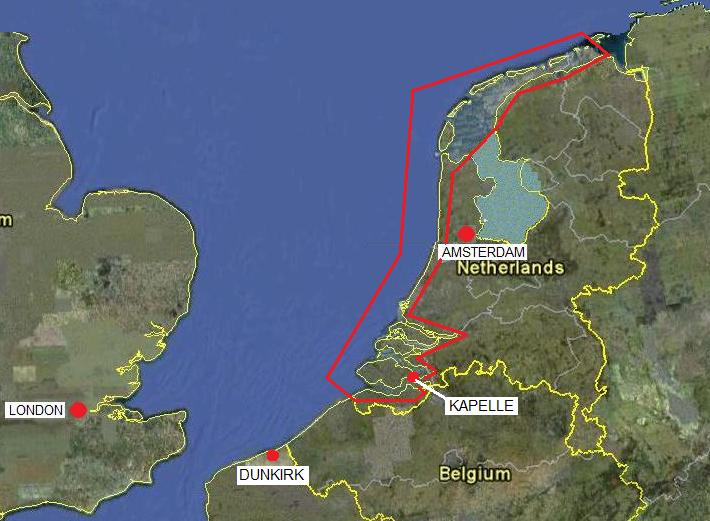
Dutch name cemetery: Kapelle Franse oorlogs begr. pl.
Full name: French War Cemetery Kapelle.
Address (usable for car navigation):
Kitskinderseweg 1. Exit Kapelle on the A58-E312 motorway
(Bergen-op-Zoom to Flushing).
For reaction or comments; send us an email,
see address and info at CONTACT.
Please use as subject title: 'Kapelle'.
The Dunkirk (Dunkerque) evacuation (operation Dynamo) was May 26-June 3rd 1940. Dozens of ships did not make it to England. Based on the reported 595 French soldiers that were buried in the Netherlands in 1945 [1], we estimate at least 400 of them washed onto Dutch beaches in the red outlined zone. This occurred 2 months after Dunkirk in the last days of July and in August 1940. They were buried locally where they washed ashore: everywhere from Cadzand to Harlingen, from Den Helder to Rottumeroog. We found their names, burial records and saw their now empty graves on these cemeteries.
In 1948 the French government decided to exhume and bring all their war dead back to France for reburial, or to Kapelle which was designated the central French war cemetery for the Netherlands. Family could choose in this matter for either option. In the summer of 1949 the operation started. See for the procedure our story Terschelling island cemetery 'Longway'.
We estimate that of the 400 washed ashore men in total, some 235 soldiers went back for reburial in France. Only the people of Schiermonnikoog island could achieve that of the 26 French graves in their care, 17 could stay on their island (and still are today in Vredenhof cemetery). 150 men from the Dutch coast were reburied and laid to rest in Kapelle. Many of them (106) without a name and not identifiable, which is normal for victims from the sea. On the 16th of May 1950 (10 years after the battle at Kapelle) the cemetery was officially opened. See photos below. The 26th of May (Dunkirk) would also have been a good opening date.
The removal of the French soldiers in 1949 (and the Americans in 1945/1946), left scars and empty spaces on the Dutch coastal war cemeteries that are well visible today on the now Commonwealth only war plots in Holland. We have found no evidence that in 1940 bodies of French soldiers entered Lake IJsselmeer (Old Zuyder Sea). They were stopped by the closing dam in the North of the lake and pushed on by the current into the direction of Harlingen and the Frisian coast.
For a name list and photo's of the graves in Kapelle follow this link: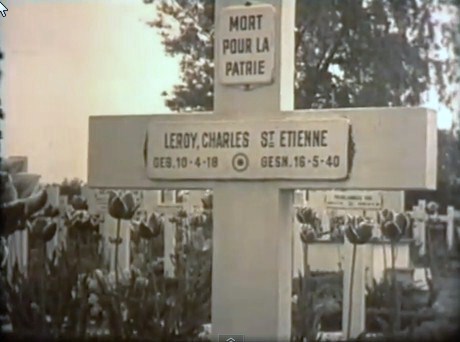
http://databankzeelandwo2.nl/index.php/nl/databanken/fransen/franse-oorlogsgraven
.
Sources:
- site Bevrijdingsmuseum Zeeland (bmzeeland.nl)
- site Longway-Terschelling.nl
- Research files on coastal cemeteries in Holland by ZZairwar 2009-2013.
© ZZ airwar (Zuyder Zee Air War)
Images under: Opening of the extended Kapelle French war cemetery in 1950.
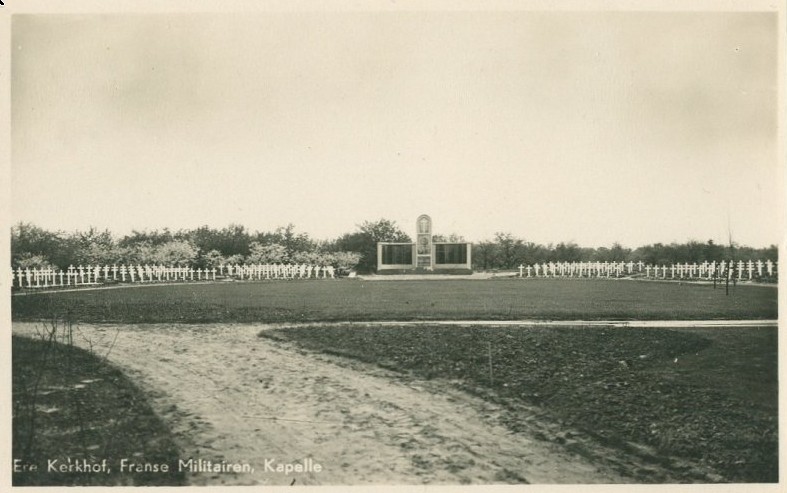
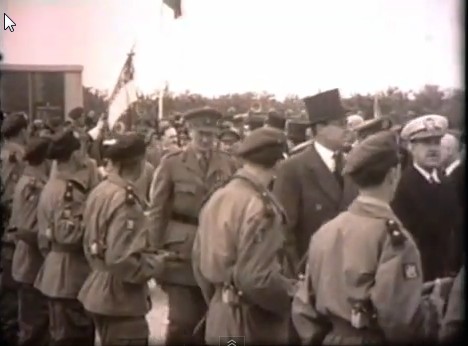
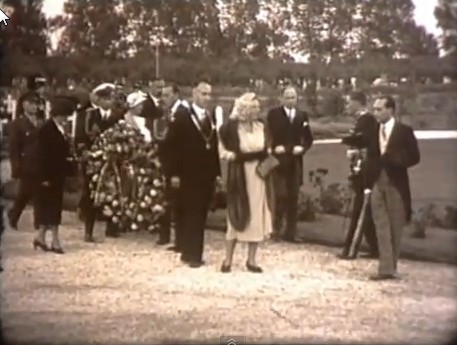
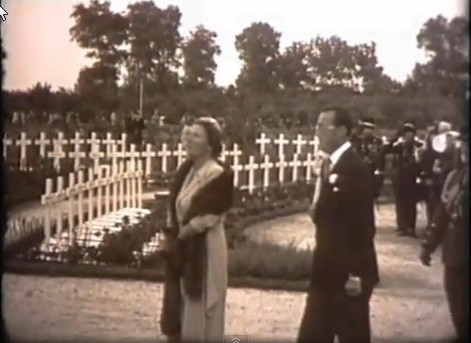
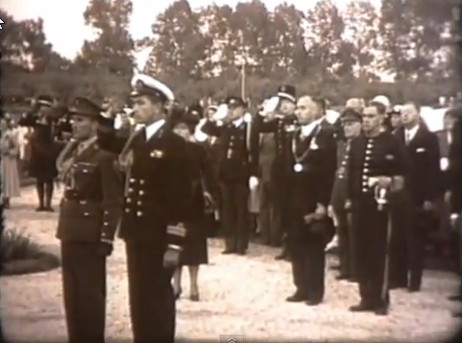
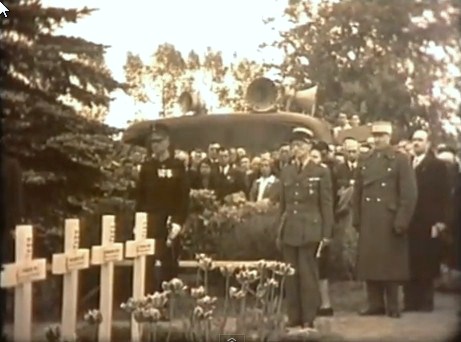
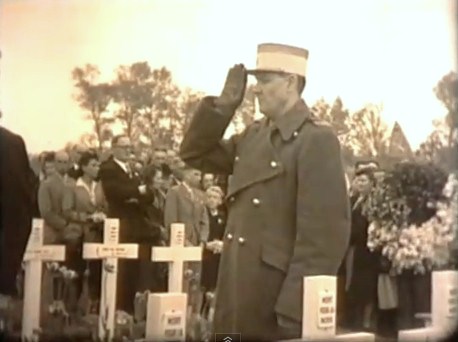
Dutch queen Juliana and her husband prince Bernard.
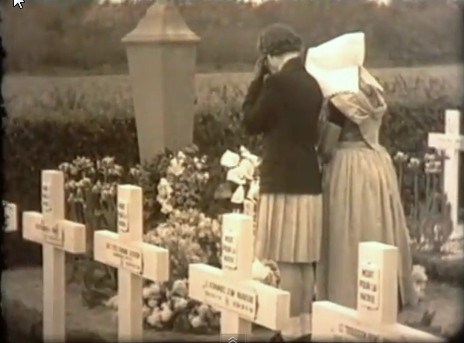
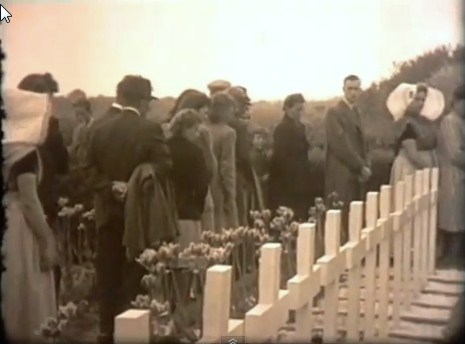
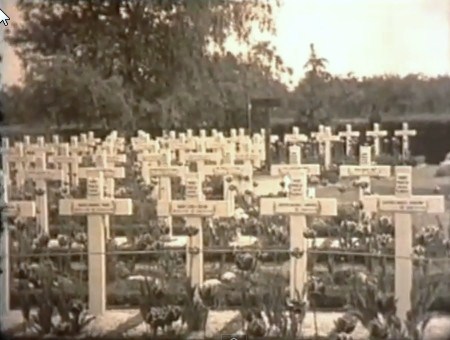
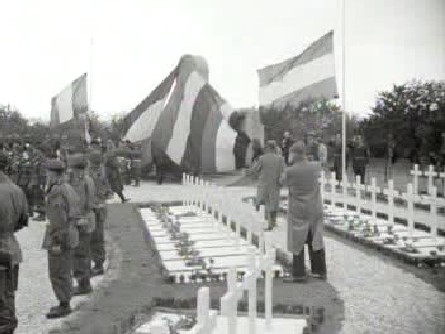
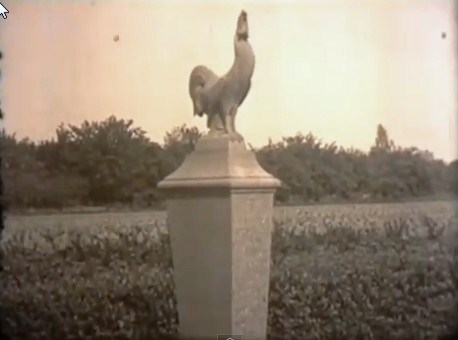
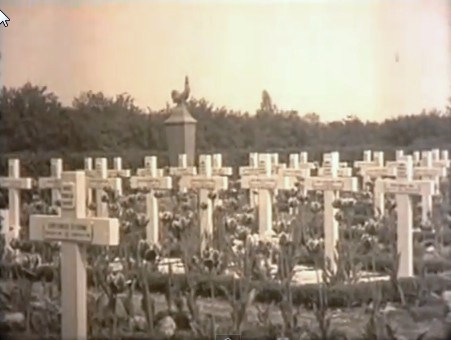
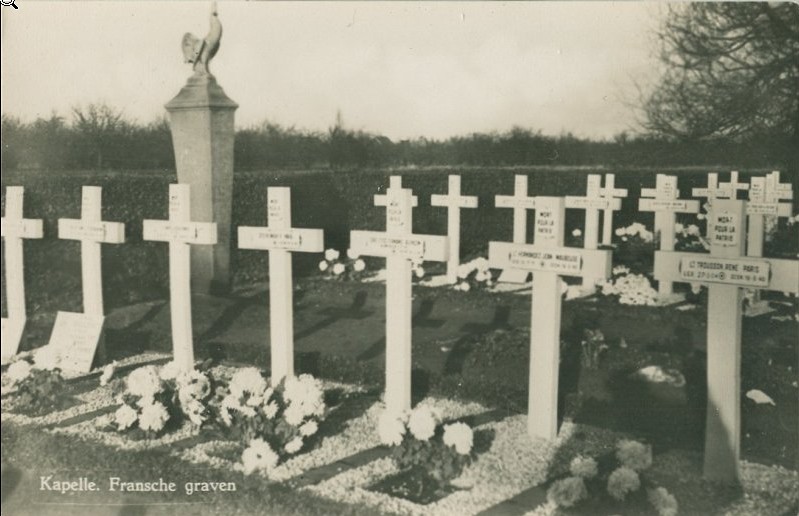
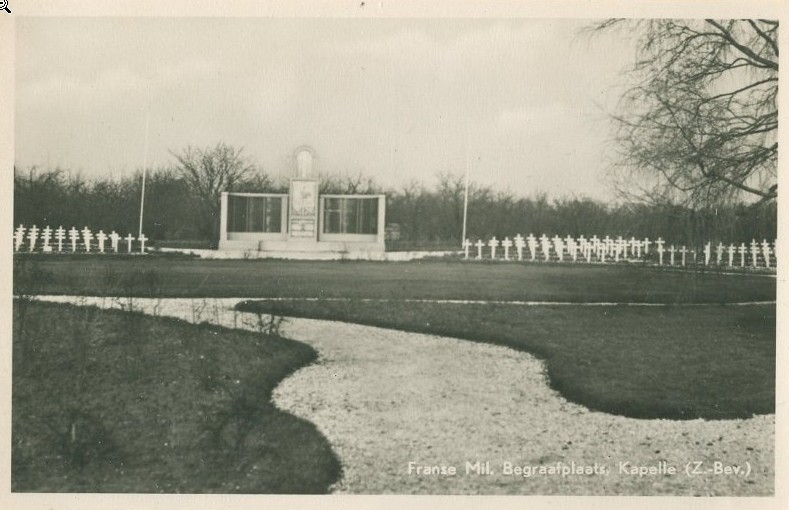
2014:

-

.

.
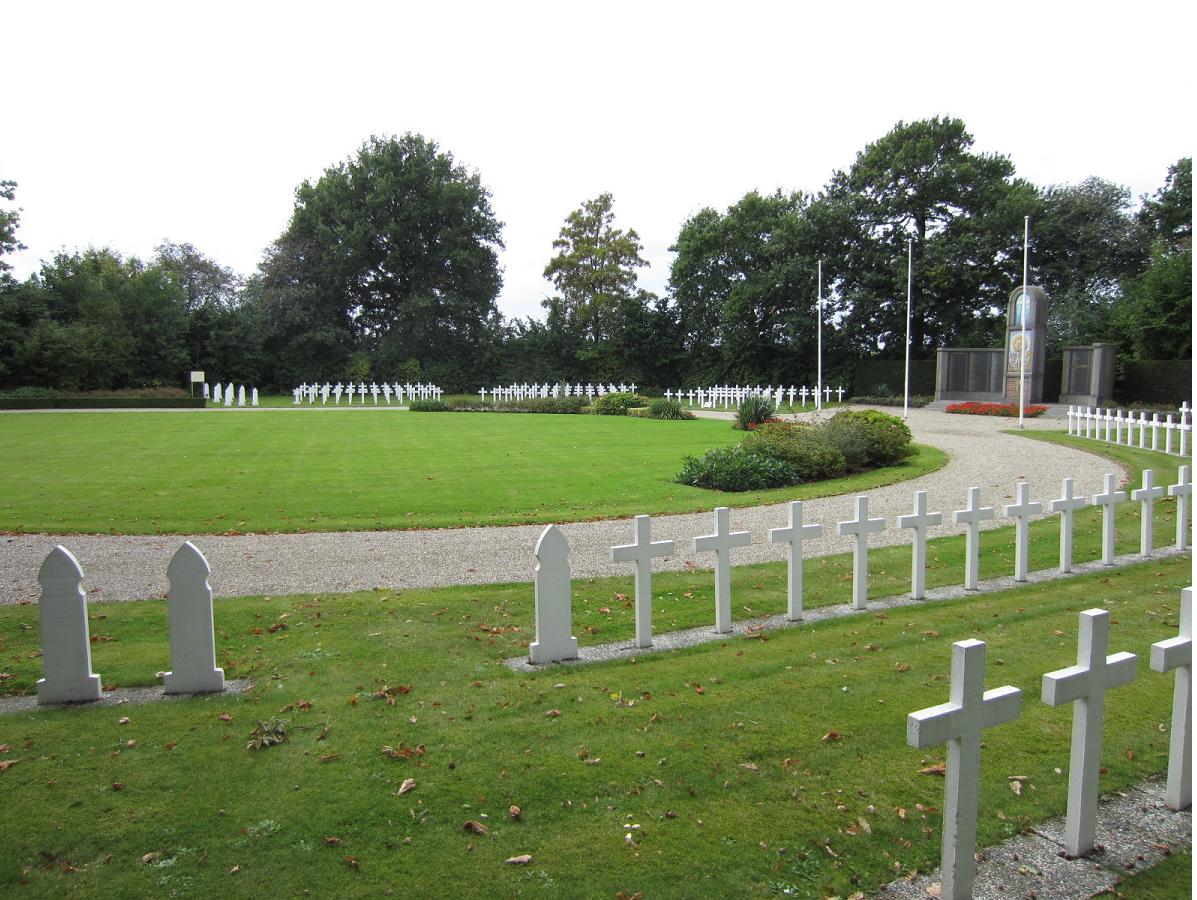
Plot C, back row. The left hand side of the row holds 2 non-identified French Dunkirk victims 1940, followed by Quarter Master Fusillier René Guy. He also washed ashore on the Dutch coast, but in March 1944 (he was initially buried in The Hague, Westduin Cemetery). René Guy was a commando of the French Navy and member of the commando-team lead by capitaine Charles Trépel. See below.
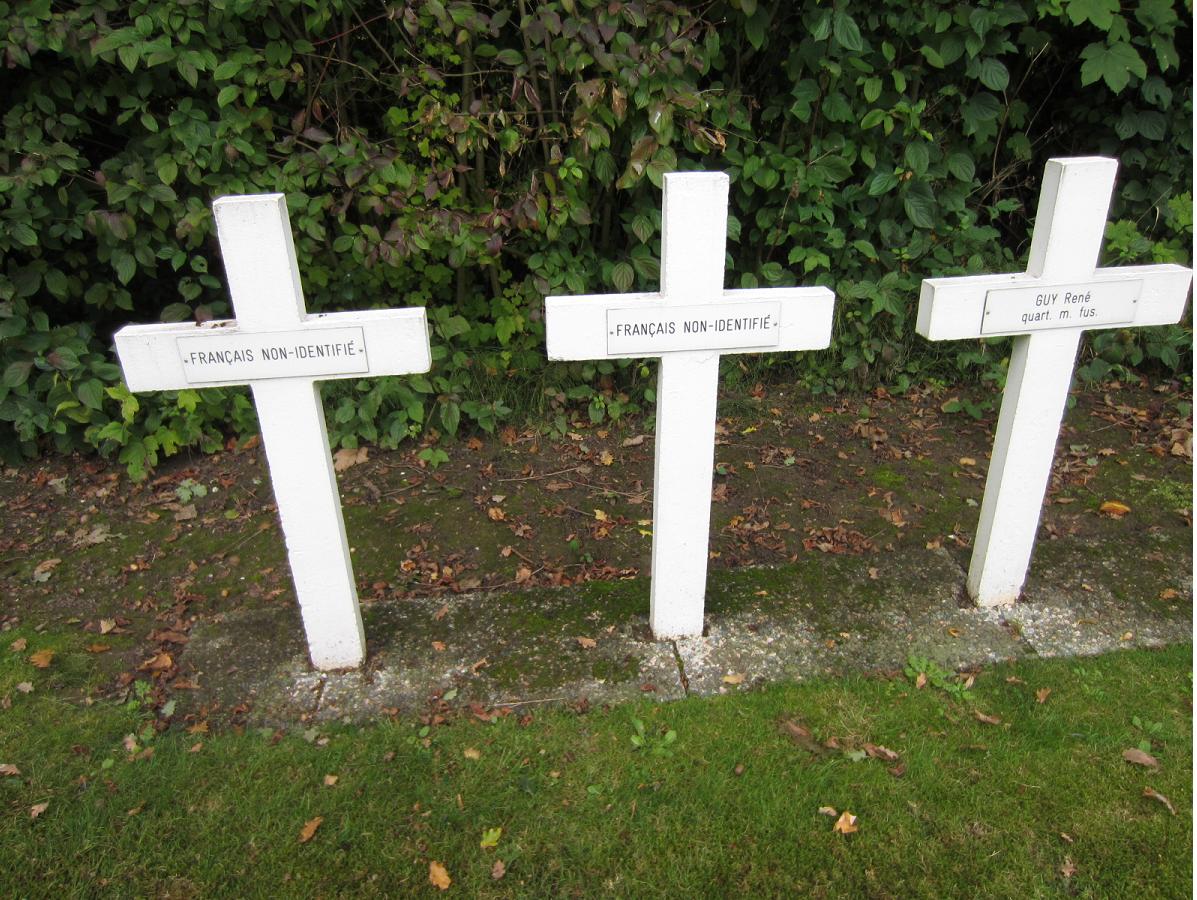
Photo below:
Next to René Guy rests his commanding officer capitaine CharlesTrépel. His unit on the cross is "1er BON. F.M.". Indented here is the No.1 BataillON de Fusiliers Marins Commandos, also known as the 1st. Battalion French Marine Commandos (BFMC, under capt. Kieffer) - N° 10 Commando, in 1944 part of the 1st Special Service Brigade under Lord Lovat.
Capitaine Trépel's 6 men commando team made a reconnaissance on the dune-coast at Wassenaar (Holland) in the night 27/28 February 1944. When they extracted from the dunes and went back into the sea, contact with the boat could not be made. All six succumbed in the very cold North Sea and their bodies washed ashore shortly later. They were dressed in underwear and a sweater. Initially buried on March 6 as 'Unknown English airman' in Westduin Cemetery in The Hague. Identified in 1945. In 1949 four men of the team were repatriated to France, Sgt. Guy and capt. Trépel were buried here. French soldiers Maurice Levèque and Sgt. Paul Nougière are Dunkirk victims. They washed ashore July 1940 and were initially buried in Westduin The Hague and Hoek of Holland.
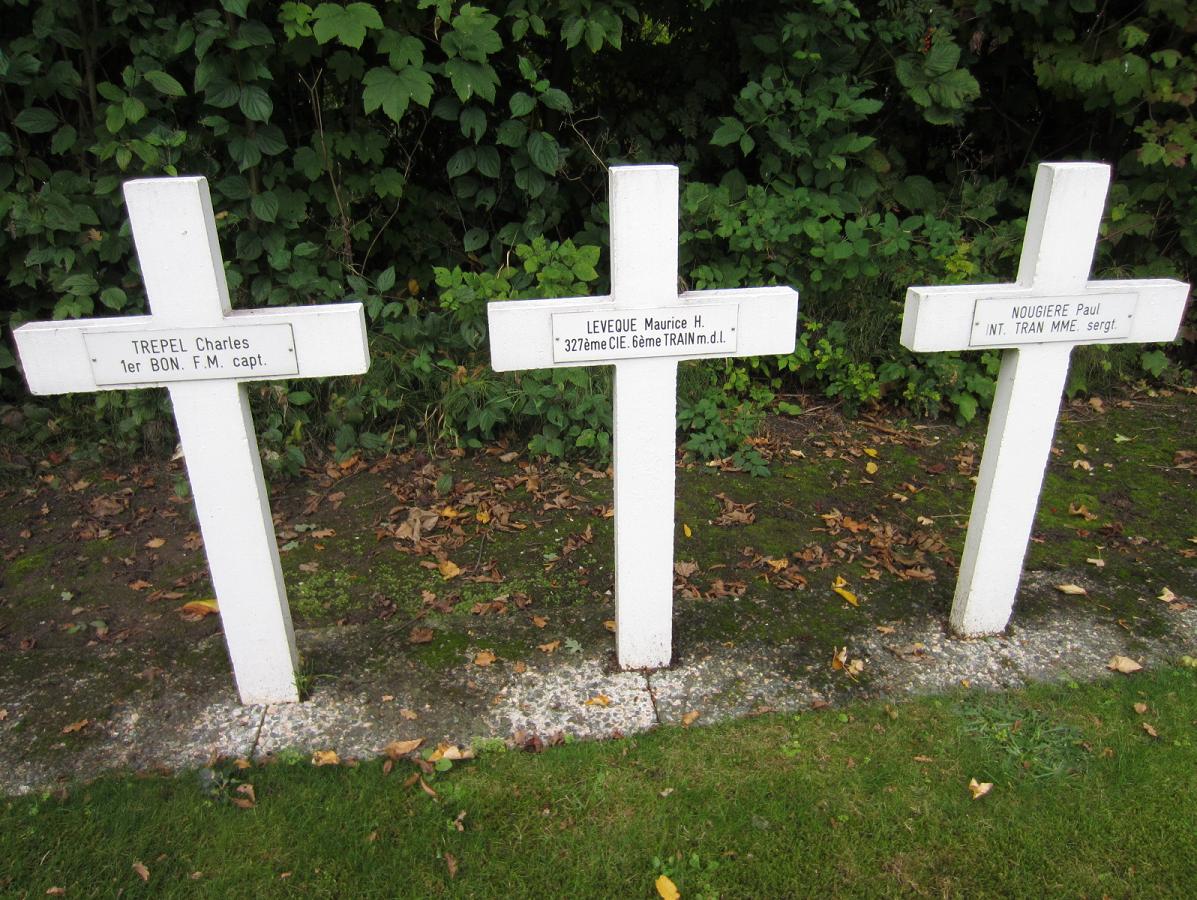
======
File 862. Kapelle French War Cemetery in NL
- Details